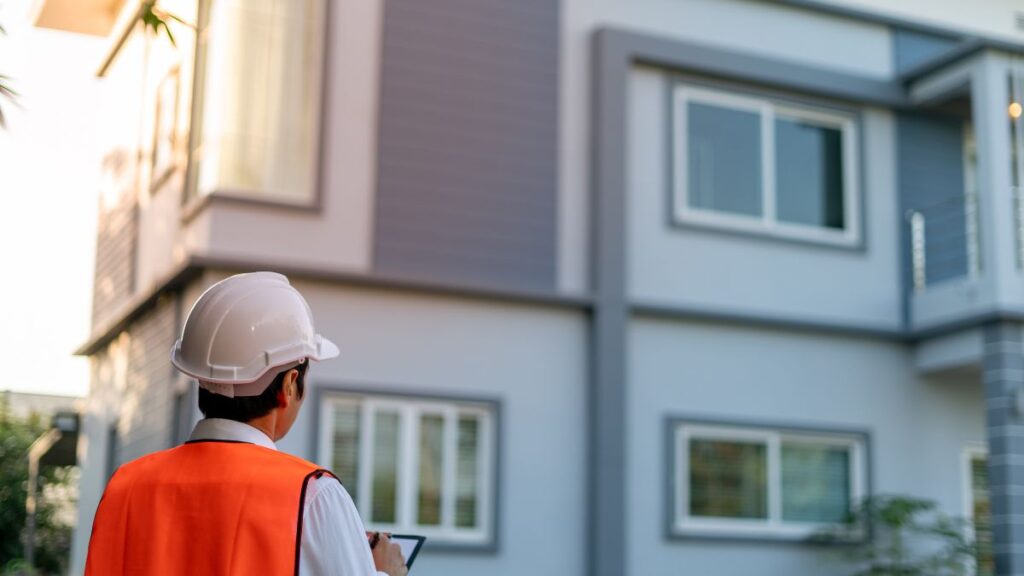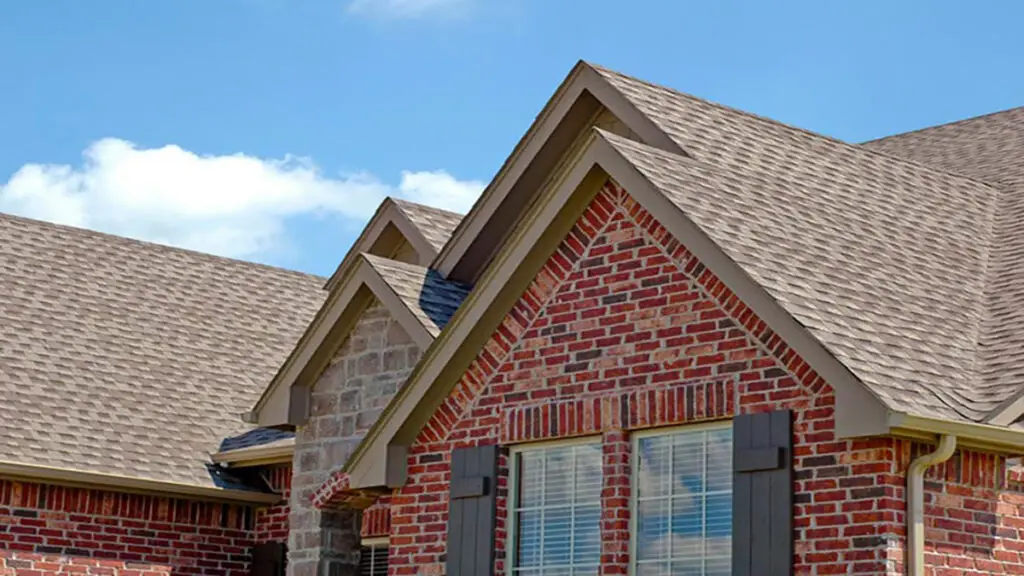The roof is very important because it protects the house from outside elements. Inspectors usually climb onto the roof to check for damage or wear. Concerns arise when the home inspector didn’t get on the roof, as it is a crucial part of the evaluation process.
Home inspectors skip physical roof evaluations due to safety concerns, adverse weather conditions, fragile or slippery roof materials, or steep/hard-to-reach roof structures. Using binoculars or drone utilization, attic inspection, or exterior wall and eaves examination are alternative methods.
Transparency is key in these situations. A clear explanation of the reasons will be provided by inspectors to instill confidence in their clients and to address any concerns regarding the roof assessment promptly.

4 Acceptable Reasons Why The Home Inspector Didn’t Get On the Roof
If your home inspector didn’t get on the roof, there could be several reasons why. Here are some possible explanations:
1. Safety Concerns for Both Inspector and Homeowner
The safety of everyone involved is a top priority in any home inspection company. This includes the inspector as well as the homeowner.
Climbing onto a roof is dangerous, especially if the roof is steep or has a high pitch. Falls from roofs result in serious injuries or even death. In cases where a professional home inspector feels it is too risky to climb onto a roof, they will not do so.
2. Weather Conditions That May Prevent Access to the Roof
Weather conditions play a significant role in determining whether or not an inspector can get on the roof surface during an entire inspection. Rain, snow, ice, wind, and extreme temperatures make it unsafe to climb onto a roof.
ASHI-Certified Inspectors, for example, avoid climbing onto roofs during periods of hot weather when shingles become soft and more susceptible to damage from foot traffic. Similarly, colder temperatures cause roofing materials like tile or slate to become brittle and prone to cracking.
3. Type of Roof Material That is Too Fragile or Slippery To Walk On
Some roofing materials are too fragile or slippery for an inspector to walk on safely without causing damage. Clay tiles crack easily underfoot, while metal roofing sheets are extremely slippery when wet.
When inspecting these types of roofs becomes challenging due to their nature, inspectors opt out of walking on them altogether and choose alternative inspection methods instead.
Related reading: 8 Different Types of Roof Vents & How They Work

4. Steep or Hard-to-Reach Roofs
Steep or hard-to-reach roofs are one of the safety hazards for inspectors. Roofs with limited access points, surrounded by obstacles or lacking proper ladders or platforms, prevent inspectors from safely reaching and inspecting the roof.
In these situations, those offering professional home inspection services must prioritize their safety and opt for alternative assessment methods to evaluate the roof’s condition.
Alternative Methods Used by Inspectors
Alternative methods are often utilized to compensate for the lack of direct rooftop examination. Home inspectors rely on ingenious strategies and specialized tools to ensure a comprehensive roof assessment, offering homeowners valuable insights even when the inspector didn’t get on the roof.
Use of Binoculars or Drones to View the Roof From a Safe Distance
Inspectors who cannot physically access the roof of a home use binoculars or drones to get a better look.
Binoculars are a relatively low-tech solution that inspectors have been using for decades. They allow the inspector to look closer at the roof without actually having to climb up on it.
On the other hand, drones are a newer technology that has become increasingly popular. One advantage of drones is that taking pictures or videos of the roof is possible, allowing for more detailed reviews later on and identifying any potential issues missed during the initial inspection process.
Some inspection companies can now deploy thermal drones, which offer several advantages for roof inspections compared to traditional methods. Thermal imaging technologies capture high-resolution photos and videos, providing detailed documentation of any issues.
It can also quickly and accurately detect water damage, such as roof leaks and moisture damage, which can be challenging to identify with the naked eye.
Take a look at this video:
Important note
Note that there are some limitations to using drones as well. They require more setup time than binoculars and cannot fly in certain weather conditions, such as high winds or heavy rain.
Inspection of Attic Spaces for Signs of Leaks or Damage From Above
Another alternative method inspectors use is inspecting attic spaces for signs of leaks or damage from above. The inspector will check for any signs of water stains on ceilings, mold growth, or rotting wood to determine if there is structural damage. This method is useful when dealing with flat roofs or steep roof pitches.
Related reading: Are Attic Ladders Safe: A Look at Wood & Aluminum Ladders
Examination of Exterior Walls and Eaves for Signs of Wear and Tear
Inspectors examine the exterior walls and eaves for signs of wear and tear which involves looking for cracks or gaps in the roofline, checking the condition of the flashing around chimneys or vents, examining the gutters for signs of damage, and indications that shingles are missing or damaged.
Disclosure of Non-Roof Inspection
It’s important for inspectors to disclose non-roof inspection during actual inspection time and should clearly communicate with homeowners or potential buyers by providing an adequate explanation. Disclosure of non-roof inspection should also be reflected in their inspection report.
Moreover, home inspectors should provide further clarification and address any doubts you may have to ensure that you receive a comprehensive understanding of the inspection process to make informed decisions about your home.
FAQs About Home Inspector Didn’t Get on the Roof
Here are some frequently asked questions regarding situations where a home inspector didn’t get on the roof, along with informative answers that shed light on this major issue.
Is it a common practice for home inspectors not to get on roofs?
Yes, it is common for experienced home inspectors not to get on roofs during inspections. This is primarily due to safety concerns, especially with steep or wet roofs, and the potential to damage fragile roofing materials.
How do home inspectors examine roofs during home inspections?
Inspectors typically examine roofs during home inspections by utilizing ladder extensions, walk boards or roofing ladders, or roof access hatch.
What are the three basic safety concerns during the home inspection?
The three primary safety concerns are electrical safety, structural integrity, and hazardous materials. The inspector evaluates potential electrical hazards, examines the property’s structural stability, and checks for the presence of hazardous materials such as asbestos or mold.
Do home inspectors make mistakes?
Yes, home inspectors can make mistakes. While they strive for accuracy, human error, and various factors can contribute to occasional oversights or errors in their assessments.
What kind of roof damage is covered by insurance?
Sudden and accidental damage caused by storms or fire is covered, while wear and tear or gradual damage may be limited or excluded. Review your insurance policy and consult your provider for covered roof damage specifics.
Who is liable if defects are found after a home inspection?
The liability falls on either the home inspector if they were negligent or the seller if they failed to disclose known defects at the inspection time. Depending on the inspection agreements and local laws, the party seeking recourse may file a claim for defects against the liable party.
Is it considered professional malpractice when a home inspector skips a room inspection?
Skipping a room inspection by a home inspector is considered professional malpractice and a breach of contract if it deviates from industry standards of practice and causes harm or damages.
How long is a home inspector liable?
Home inspectors may have liability for a certain period after the inspection, known as the “statute of limitations.” In some places, the statute of limitations for home inspection-related claims is around 2 to 3 years, but it can be longer or shorter depending on local laws.
Keep an Open Mind
Understandably, homeowners might feel uneasy if their home inspector did not access their roof during an inspection. However, it is important to remember that the inspection checklist involves more than just inspecting the roof.
It is natural for homeowners to be disappointed in cases like this. Still, it is important to understand why this happens and what alternative methods are used instead.
Remember, even without accessing the roof directly, inspectors can still conduct thorough inspections using other methods to ensure your future dream home will be safe and secure for you and your loved ones!







